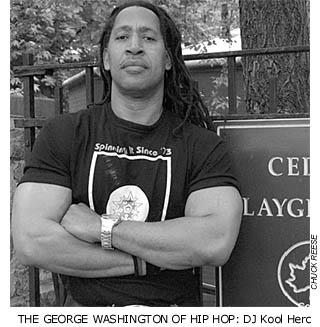
From Urban Fiction
The impoverished of Kingston, Jamaica gathered together in groups to form DJ conglomerates. They spun roots and culture records and communicated with the audience over the music. At the time, the DJ’s comments weren’t as important as the quality of the sound system and its ability to get the crowd moving. Kool Herc grew up in this community before he moved to the Bronx.
During the late sixties, reggae wasn’t popular with New Yorkers. As a DJ, Kool Herc spun rhythm and blues records to please his party crowd. But, he had to add his personal touch. During the breaks, Herc began to speak to his audience as he had learned to do in Jamaica. He called out, the audience responded, and then he pumped the volume back up on the record. This call and response technique was nothing new to this community who’d been reared in Baptist and Methodist churches where call and response was a technique used by the speakers to get the congregation involved. Historians compare it to the call and response performed by Jazz musicians and was very much a part of the culture of Jazz music during the renaissance in Harlem.
Herc’s DJ style caught on. His party’s grew in popularity. He began to buy multiple copies of the same albums. When he performed his duties as a DJ, he extended the breaks by using multiple copies of the same records. He chatted, as it is called in dancehall, with his audience for longer and longer periods.
Others copied Herc’s style. Soon a friendly battle ensued between New York DJs. They all learned the technique of using break beats. Herc stepped up the game by giving shout-outs to people who were in attendance at the parties and coming up with his signature call and response. Other DJs responded by rhyming with their words when they spoke to the audience. More and more DJs used two and four line rhymes and anecdotes to get their audiences involved and hyped at these parties.
One day, Herc passed the microphone over to two of his friends. He took care of the turn table and allowed his buddies to keep the crowd hyped with chants, rhymes and anecdotes while he extended the breaks of different songs indefinitely. This was the birth of rap as we know it
No comments:
Post a Comment